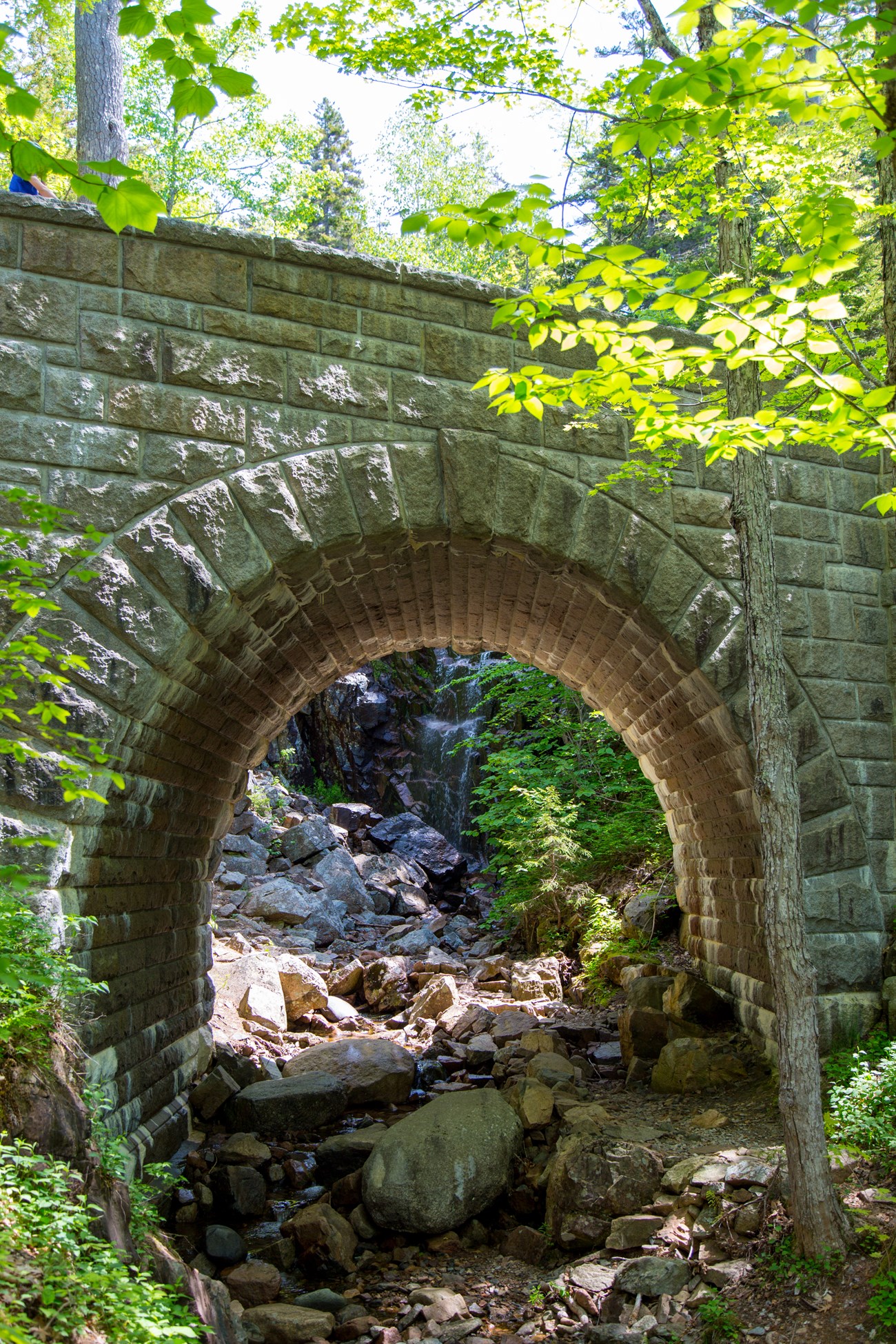Last updated: October 6, 2021
Article
Waterfall Bridge Fast Facts

FOA
The Waterfall Bridge was built in 1925. There are 16 stone-faced bridges in Acadia National Park that are part of the forty-five mile carriage road system. A 17th bridge, the Cobblestone Bridge, is along the carriage roads just outside the Park.
History:
Carriage roads and bridges were built by John D Rockefeller Jr. He built them not only for his personal use, but opened them up for all people (the public) to use. They were built with multifunctional access in mind. This means they were intended for lots of different purposes: carriages, horse riders, walkers, and bikes…but no cars!
Materials:
The bridges are steel reinforced concrete bridges, but have natural stone on the outside to make them blend into the surrounding areas.
Rock Cutting:
- To cut (or quarry) these stones, workers (called stone masons) had to use tools like drills and metal wedges and shims called “feathers and pins.”
- In order to cut through rock, masons needed to drill a line of holes into the stone. This was done by one worker holding a long-handled metal drill with a sharpened edge to the rock. Other workers would take turns hitting the end of the drill. The worker holding the drill would rotate it a little between every strike of the hammer.
- To split the rock, “feathers and pins” were put into each of the drilled holes. Once placed into the holes, a mason would hit each set of feathers and pins until enough pressure was created that the rock broke. Because of the type of granite here in Acadia, the split would be a straight line.
Maintenance:
Many years after the roads and bridges were built, it still takes effort to keep them in a good condition for people to use. The park service does some of this work, but volunteers organized through Friends of Acadia are a necessary part of keeping these roads and bridges in working order. Friends of Acadia is a nonprofit organization that helps preserve and protect Acadia National Park in many ways.
Stream:
The stream is called Hadlock Brook. It starts on the southern side of Sargent Mountain and ends at Upper Hadlock Pond.
Forest:
This forest consists of spruce, hemlock, birch and maples. Oftentimes, ferns, bunch berries, mosses and lichens can be seen in the understory. Small mammals and woodland birds can be seen and heard in this area. You might see chipmunks, squirrels, porcupines, possibly a fox, and bats in the evening.
